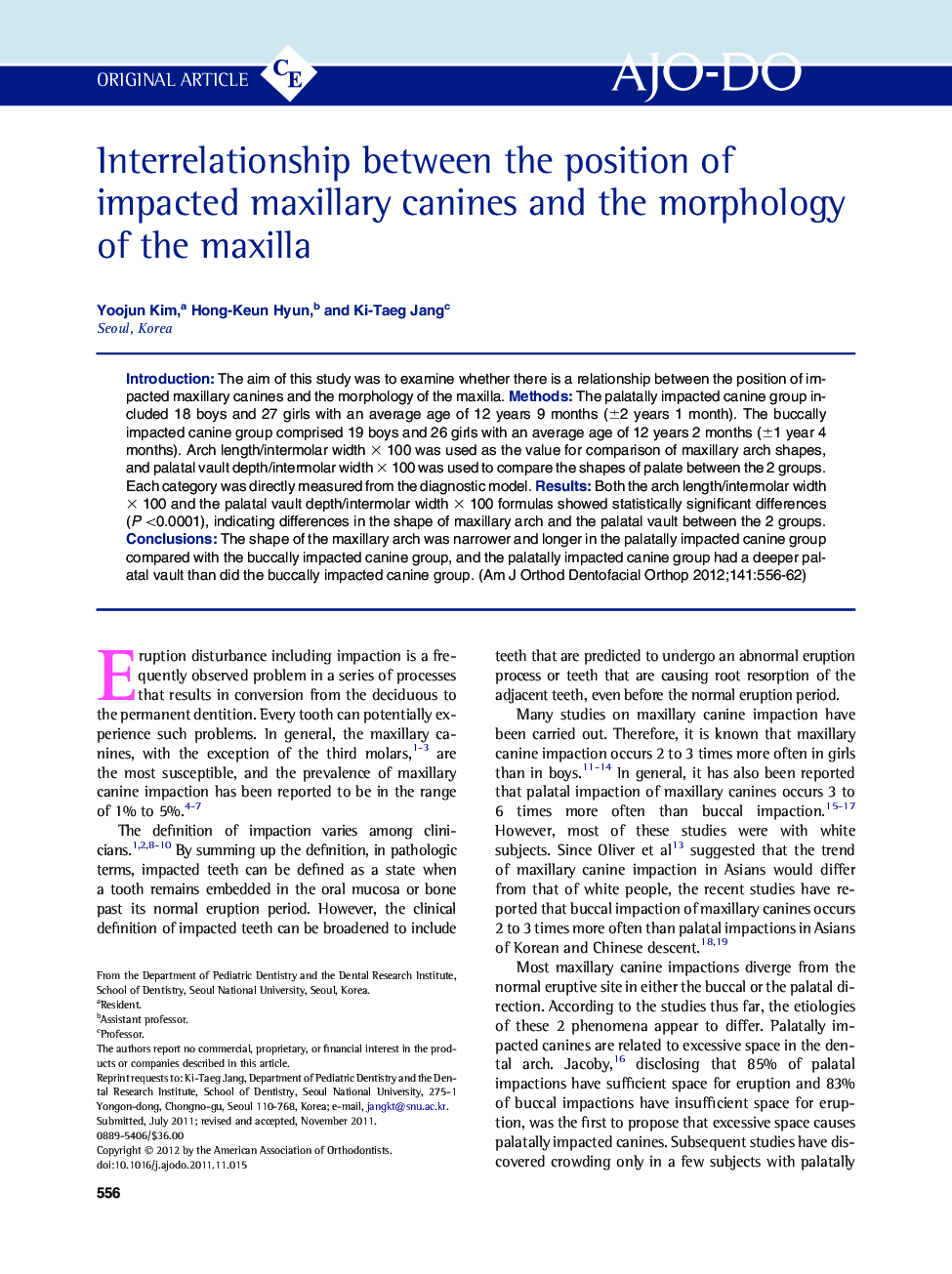| Article ID | Journal | Published Year | Pages | File Type |
|---|---|---|---|---|
| 3116982 | American Journal of Orthodontics and Dentofacial Orthopedics | 2012 | 7 Pages |
IntroductionThe aim of this study was to examine whether there is a relationship between the position of impacted maxillary canines and the morphology of the maxilla.MethodsThe palatally impacted canine group included 18 boys and 27 girls with an average age of 12 years 9 months (±2 years 1 month). The buccally impacted canine group comprised 19 boys and 26 girls with an average age of 12 years 2 months (±1 year 4 months). Arch length/intermolar width × 100 was used as the value for comparison of maxillary arch shapes, and palatal vault depth/intermolar width × 100 was used to compare the shapes of palate between the 2 groups. Each category was directly measured from the diagnostic model.ResultsBoth the arch length/intermolar width × 100 and the palatal vault depth/intermolar width × 100 formulas showed statistically significant differences (P <0.0001), indicating differences in the shape of maxillary arch and the palatal vault between the 2 groups.ConclusionsThe shape of the maxillary arch was narrower and longer in the palatally impacted canine group compared with the buccally impacted canine group, and the palatally impacted canine group had a deeper palatal vault than did the buccally impacted canine group.
